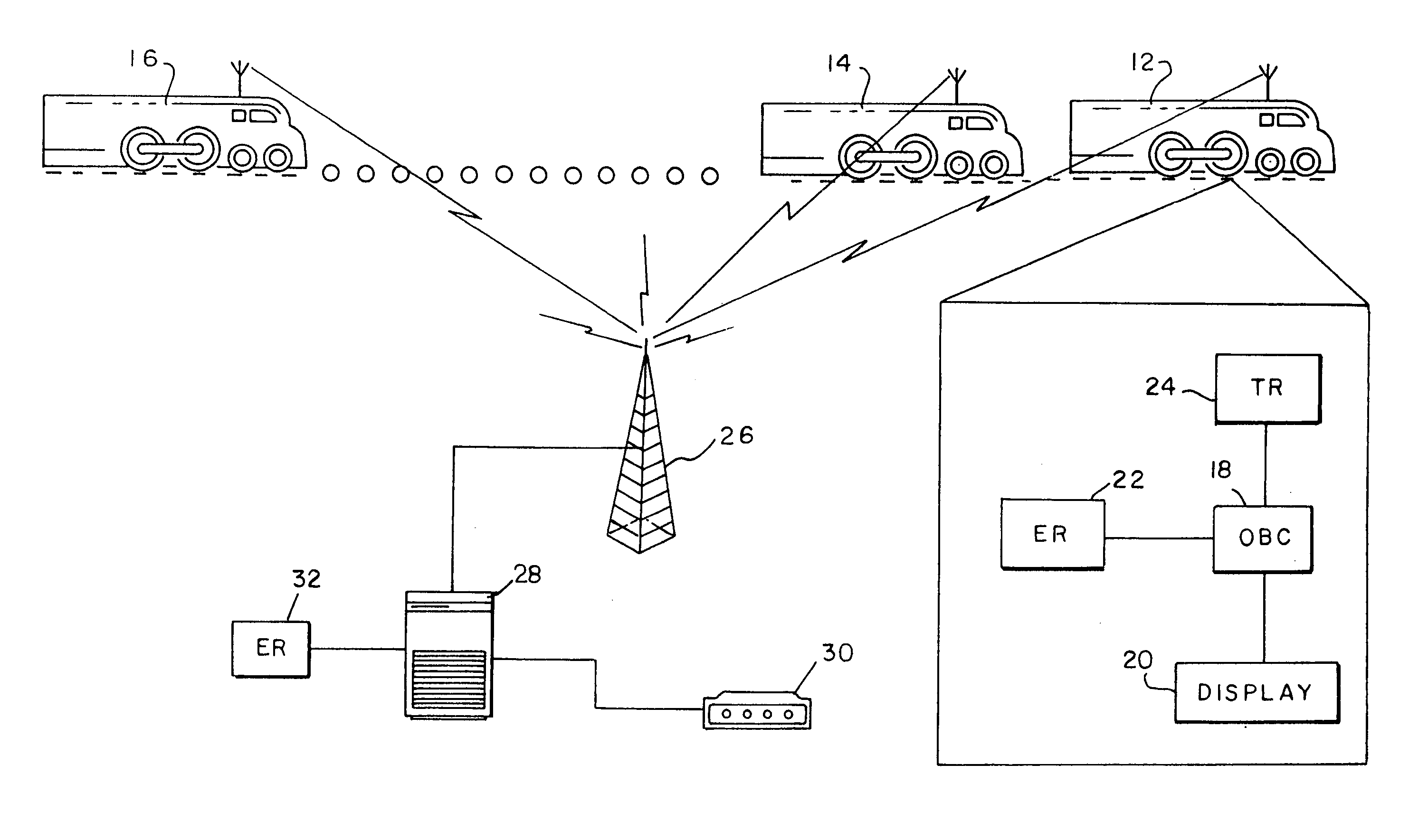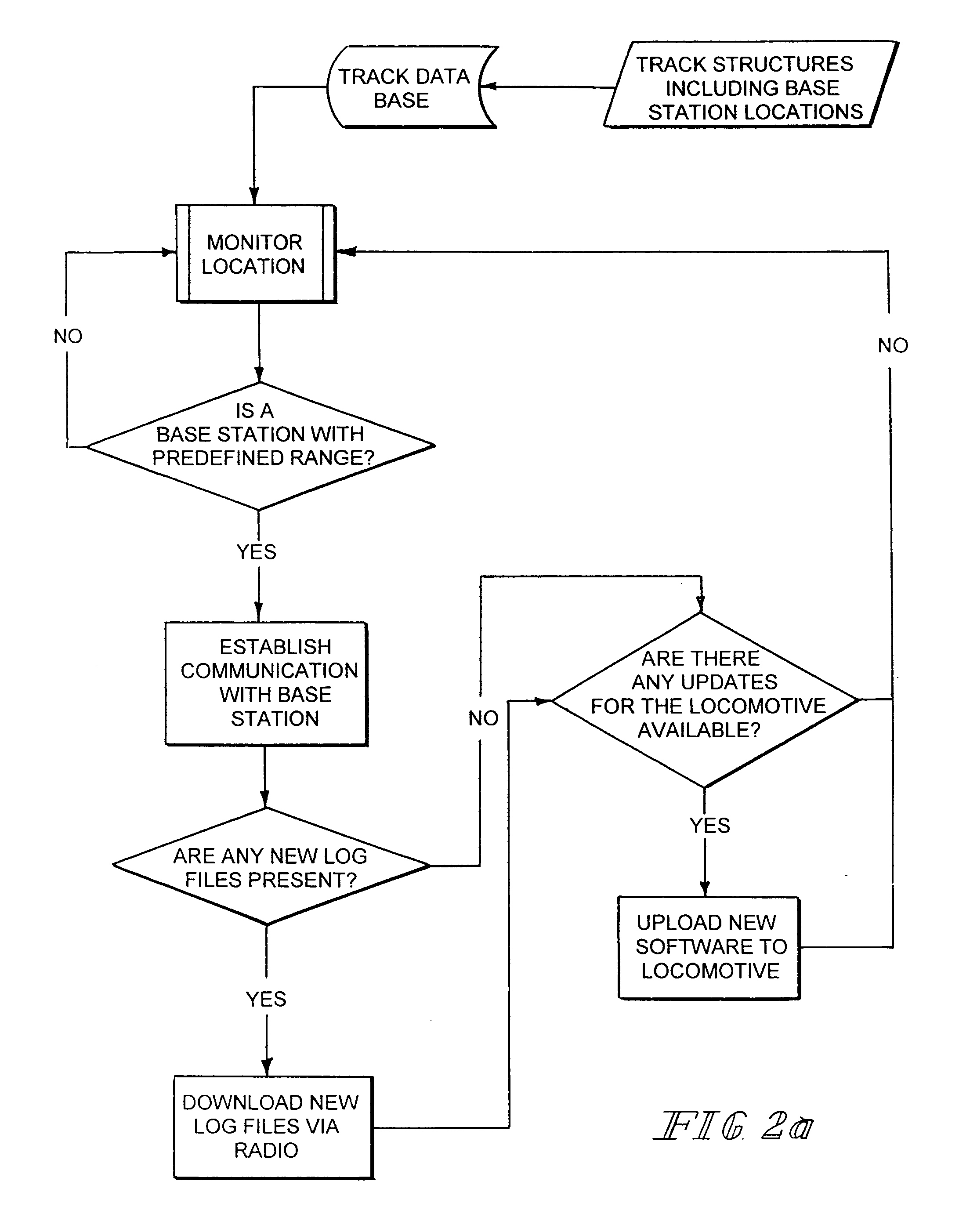Method of transferring files and analysis of train operational data
- Summary
- Abstract
- Description
- Claims
- Application Information
AI Technical Summary
Benefits of technology
Problems solved by technology
Method used
Image
Examples
example 2
[0068] Using the same setup as Example 1, the energy imbalance is found to make the train go faster than expected but not consistently. The adaptive observer algorithm determines that the increased speed occurs around corners and therefore adjusts the curve efficiency down to compensate.
example 3
[0069] Using the same train as above but with only head end equipment the LEADER System now has incomplete status information lacking data from the two trailing locomotives. As the train movement begins, the LEADER System assumes the two trailing locomotives exactly mimic the head end (or lead) locomotive. As an energy imbalance is found the adaptive observer tunes the train by adjusting horsepower capability of the two trailing units, dynamic brake efficiency of the two trailing units as well as other train efficiencies such as rolling, curve, grade resistance, and air brake efficiency.
example 4
[0070] In all the above examples it was assumed that the train consist information was known including details of car weight, brake type, locomotive type, car length and geometries, and car positions. If this data was not available or reported to LEADER system in error, LEADER system will again use the energy imbalance to determine what the true consist parameters are. This calculation is done in aggregate but results in a good representation of the train consist.
[0071] There are many combinations of conditions the adaptive observer will tune for, but the general approach will be the same: To identify anomalies in the energy balance equation, relate them to specific events and adjust the train efficiencies to compensate.
[0072] As the "LEADER Expert" algorithm is operating live, in real time, the efficiencies get more and more accurate. These adjusted efficiencies will be downloaded so they can be used during playback and analysis saving time in the set-up of an analysis session.
PUM
 Login to View More
Login to View More Abstract
Description
Claims
Application Information
 Login to View More
Login to View More - R&D
- Intellectual Property
- Life Sciences
- Materials
- Tech Scout
- Unparalleled Data Quality
- Higher Quality Content
- 60% Fewer Hallucinations
Browse by: Latest US Patents, China's latest patents, Technical Efficacy Thesaurus, Application Domain, Technology Topic, Popular Technical Reports.
© 2025 PatSnap. All rights reserved.Legal|Privacy policy|Modern Slavery Act Transparency Statement|Sitemap|About US| Contact US: help@patsnap.com



